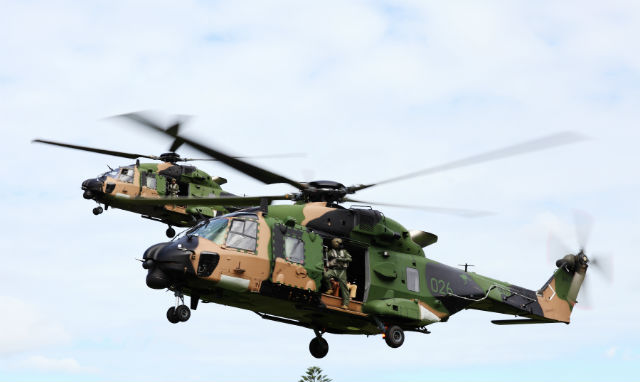NH Industries (NHI) must continue its effort to rein in the scope of its NH90 helicopter programme “towards a more manageable number of versions” for the rotorcraft to be “truly a success”.
That was the blunt message delivered by Rear Adm Terry Dalton, head of helicopters with the Australian Defence Organisation.
Although several NH90 customers bear the scars from a painful development process that resulted in a 10-year delay, Canberra’s procurement of a planned fleet of 46 helicopters was one of the most painful.
The programme, designated the MRH-90 in Australian service, remains five years behind schedule, and is likely to slip by a further 24 months, said Dalton, speaking at the Defence and Security Equipment International (DSEI) conference, in London, on the future military rotorcraft, on 14 September.
Although Dalton says the “aircraft has a lot of potential” and that it is a “great helicopter to fly” and that a number of issues such as floor and windscreen cracking on the 10.6t MRH-90 have been resolved, Australia’s fleet still lacks fast-roping capability and door guns “all those things that make a helicopter a true military asset”.
“I would love them to spend more effort on the role equipment in the back rather than flashy screens up front,” says Dalton.

Commonwealth of Australia
NHI – a three-way consortium of Airbus Helicopters, AgustaWestland, and Fokker – has created its own problem by developing 23 distinct variants for 13 nations, says Dalton. “You just can’t afford to make every customer happy.
“NH90 is going to have to come back towards a more manageable number of versions to make that programme truly a success,” he says.
In addition, only by putting financial pressure on the manufacturer – notably through a fly-by-the-hour maintenance contract – has Australia been able to achieve the desired level of in-service support.
Dalton says that turnaround times on some Europe-sourced components have been “three times longer than promised” and has encountered instances where parts “sit for months and months” at suppliers.
“Moving to a repair-by-the-hour programme motivates Airbus [Helicopters], in particular, to go and hunt those parts down for us.”
Australia believed that the NH90 was at a higher level of maturity when it placed its order, says Dalton, but has learnt a lesson from the debacle: “If we are going to buy into a programme that is still in its development phase, you have to allow for some issues to arise.”
An Australian spending watchdog in 2014 issued a damning report on the procurement, which it said had led to the costly continuation of service of the nation's Sikorsky S-70A Black Hawks well beyond their retirement date.
Source: FlightGlobal.com























